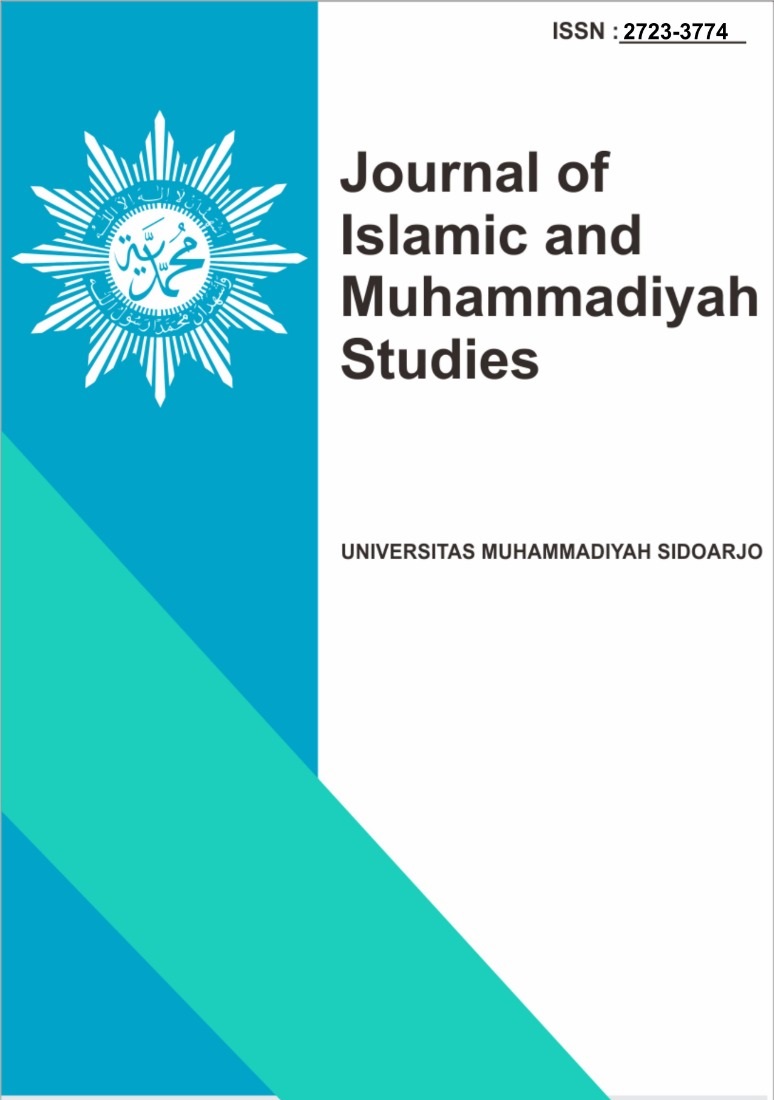Intrinsic and Extrinsic Motivation of Fourth Grade Teachers at Muhammadiyah 1
Motivasi Intrinsik dan Ekstrinsik Guru Kelas IV di Muhammadiyah 1
Keywords:
Teacher Motivation, Intrinsic Motivation, Extrinsic Motivation, Elementary School, MuhammadiyahAbstract
General Background: Teacher motivation is a crucial determinant of educational quality, influencing teaching performance, student engagement, and school outcomes. Specific Background: At SD Muhammadiyah 1 Candi, Sidoarjo, understanding the intrinsic and extrinsic motivation of fourth-grade teachers is essential to optimize learning processes. Knowledge Gap: Despite existing studies on teacher motivation, limited research has explored the application of Herzberg’s two-factor theory in the context of Muhammadiyah elementary schools. Aim: This study aims to analyze the intrinsic and extrinsic motivational factors influencing fourth-grade teachers’ teaching performance. Methods: A descriptive qualitative approach was employed, using in-depth interviews, classroom observations, questionnaires, and documentation, with data analyzed through reduction, presentation, and conclusion drawing. Results: Findings indicate that intrinsic motivation—personal satisfaction, teaching enthusiasm, and professionalism—is the primary driver of teacher performance, while extrinsic factors such as salary, social recognition, and work environment serve as reinforcing elements. Novelty: The study highlights the dominant role of intrinsic motivation within a Muhammadiyah school context, emphasizing the interplay between personal dedication and institutional support. Implications: Strengthening intrinsic motivation alongside adequate extrinsic support fosters productive teaching conditions, improving learning quality.
Highlights:
-
Intrinsic motivation drives teacher performance.
-
Extrinsic factors reinforce, not lead, motivation.
-
Herzberg’s theory applicable in Muhammadiyah schools.
Keywords: Teacher Motivation, Intrinsic Motivation, Extrinsic Motivation, Elementary School, Muhammadiyah
References
Republik Indonesia. (2003). Undang-Undang Republik Indonesia Nomor 20 Tahun 2003 Tentang Sistem Pendidikan Nasional.
Republik Indonesia. (2005). Undang-Undang Republik Indonesia Nomor 14 Tahun 2005 Tentang Guru dan Dosen.
Kurnia Nugroho, M. A., & Satriadi, S. (2021). Analisis motivasi kerja guru di SMP Negeri 21 Satu Atap Teluk Bintan, Kabupaten Bintan. Cash, 1(2), 52–70. https://doi.org/10.52624/cash.v1i02.2228
Avihani, N., & Izzaty, S. N. (2023). Pendidikan guru madrasah ibtidaiyah. Jurnal Pendidikan Guru, November 2023.
Purmawanto, S. E., Mashudi, & Utomo, B. B. (2024). Analisis motivasi intrinsik dan ekstrinsik guru ekonomi SMAN 1 Mempawah Hulu, Kabupaten Landak. Jurnal Pendidikan Ekonomi, 1–8.
Robbins, S. P., Judge, T. A., & Millett, O. B. (2015). Organizational behavior: The essentials. Pearson Higher Education.
Sutrisno, R. A., Herdiyanti, H., Asir, M., & Yusuf, M. (2022). Dampak kompensasi, motivasi, dan kepuasan kerja terhadap kinerja karyawan di perusahaan: Review literature. Management Studies and Entrepreneurship Journal, 3(6), 3476–3482.
Aly, M. M., & Yuliyanto, E. (2018). Analisis motivasi kerja guru di SMA Negeri 9 Semarang. Seminar Nasional Edusainstek FMIPA UNIMUS, 442–449.
Novianti, N., & Dewi, L. A. P. (2024). Analisis motivasi kerja terhadap peningkatan kualitas kinerja guru pada SMK Al-Amanah Dayeuhkolot. Jurnal Ekonomi dan Manajemen, 13(2), 117. https://doi.org/10.36080/jem.v13i2.2891
Asmawati, A. (2022). Analisis faktor-faktor yang mempengaruhi motivasi kerja guru Sekolah Menengah Atas Negeri di Kabupaten Sumbawa Barat. Jurnal Ilmiah Profesi Pendidik, 7(4b), 2772–2782. https://doi.org/10.29303/jipp.v7i4b.1231
Ratmilia, E., & Sukirno, S. (2019). Motivasi kerja guru sekolah dasar ditinjau dari karakteristik demografi. Premise Education: Jurnal Pendidikan Dasar dan Pembelajaran, 9(1), 64–72. https://doi.org/10.25273/pe.v9i1.4311
Moleong, L. J. (2005). Metodologi penelitian kualitatif. Bandung: Remaja Rosdakarya.
Sugiyono. (2019). Metode penelitian kuantitatif, kualitatif, dan R & D. Bandung: Alfabeta.
Miles, M. B., Huberman, A. M., & Saldaña, J. (2014). Qualitative data analysis: An expanded sourcebook (3rd ed.). Sage.
Wahyuni, S. T., Rusby, Z., & Rosmayani, R. (2023). Motivasi kerja guru honorer di SMP Negeri 30 Kota Pekanbaru. Repository Universitas Islam Riau. http://repository.uir.ac.id/22688/1/217121018.pdf
Mariam, N. S., & Nurachadijat, K. (2023). Gaya kepemimpinan kepala sekolah terhadap motivasi kerja guru. Jurnal Ilmiah dan Karya Mahasiswa, 1(3), 10–25. https://doi.org/10.54066/jikma-itb.v1i3.278
Utomo, H. B., Suminar, D. R., Hamidah, H., & Yulianto, D. (2019). Motivasi mengajar guru ditinjau dari kepuasan kebutuhan berdasar determinasi diri. Jurnal Psikologi, 18(1), 69–81. https://doi.org/10.14710/jp.18.1.69-81
Azizah, S. N., & Kanda, A. S. (2024). Pengaruh tunjangan kinerja terhadap motivasi dan kepuasan kerja guru pendidikan usia dini. Lokawati: Jurnal Penelitian Manajemen dan Inovasi Riset, 2(2), 318–322. https://doi.org/10.61132/lokawati.v2i2.666
Azwanda, Y. E. H., Hasri, S., & Shiron, S. (2024). Model dua faktor Herzberg dalam meningkatkan motivasi kerja pegawai. Jurnal Studi Multidisipliner, 8(12), 862–866. https://oaj.jurnalhst.com/index.php/jsm/article/view/8095/9123
Saputri, N. B. I., Affandi, P. A., & Setia, (2023). Pengaruh lingkungan dan stres kerja terhadap kinerja perawat dengan kepuasan kerja sebagai variabel intervening di RSUD Jampangkulon, Kabupaten Sukabumi. Universitas Pasundan Bandung.
Nurhayati, N. (2022). Pengaruh kelengkapan administrasi sekolah terhadap motivasi kerja guru di SMP Alwashliyah 4 Medan. Pedagogi: Jurnal Ilmiah Pendidikan, 8(1), 96–103.
Downloads
Published
How to Cite
Issue
Section
License
Copyright (c) 2025 Farah Aurellia, Mahardika Darmawan Kusuma Wardana

This work is licensed under a Creative Commons Attribution 4.0 International License.
Authors retain copyright and grant the journal right of first publication with the work simultaneously licensed under a Creative Commons Attribution 4.0 International License that allows others to share the work with an acknowledgement of the work's authorship and initial publication in this journal.






